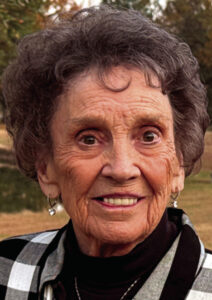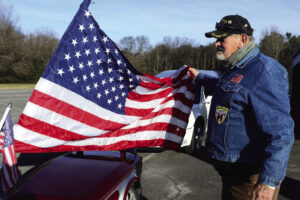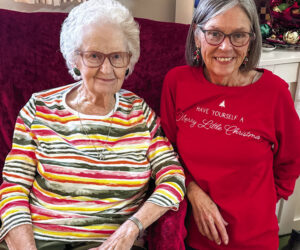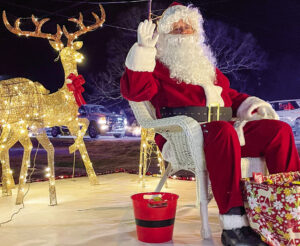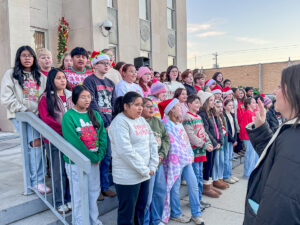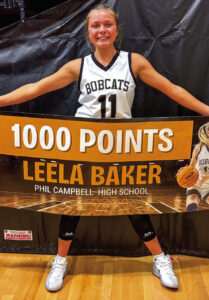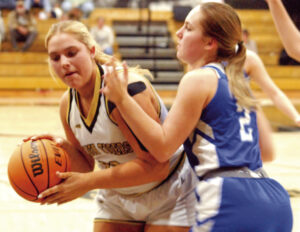Pyrography passion: Therapeutic hobby brings patience and peace
FRANKLIN LIVING— Out on Rusty Armadillo Farm in Hodges, Tracy McCauley is always busy. There are goats to feed, eggs to collect, micro-greens to harvest and fruit trees to nurture. There is goat’s milk waiting to be turned into soap and other products, and there’s 61 sprawling acres waiting to be transformed by the McCauleys’ agri-tourism dreams. In her eagerness to move from project to project, McCauley describes herself as someone who has a hard time sitting down. “I always have a hundred projects going on, and when I don’t, I’m thinking about projects, and I have a to-do list, and even at night I can’t shut my brain off.”
That all changes, however, when she finds a pocket of time to enjoy the creative outlet she discovered in October 2018: pyrography.
The art of burning images into wood, pyrography became an instant passion for McCauley after she first saw the craft on a TV show. She said although she has always had an artistic nature, drawing is not a strong skill – except, apparently, when it comes to drawing on wood with a white-hot pen. “From the moment I touched it I had so much fun,” she explained. “From the very first piece I did, I thought, ‘This is it. This is going to be my thing.’”
Husband Doug is a woodworker, and it was he who encouraged her initial interest, purchasing a beginner kit for her to try her hand at pyrography. The beginner kit came with a single pen and five interchangeable tips. “It almost worked like a stamp,” she said. “Each tip, you would press down on the wood and make different designs. I loved it. I burnt the whole thing up within probably two months, I used it so much.”
With her new passion growing, it was time to upgrade to a more professional kit – the Colwood Super Pro 2, complete with two different heat setting and a wide array of replaceable pens and tips. With her new tools in place and a ready supply of wood thanks to Doug and the couple’s sawmill, all she needed was a dedicated work space. She started at the kitchen table – but that quickly escalated until her new-found hobby had overtaken half the kitchen. “We decided to just turn one of our spare rooms into my work room.” She now has a long workbench with good lighting – “Lighting is key, of course, with any creative project,” – and an easel her husband built. She has a torch she can use on certain projects – “That takes some of it to the next level. With a torch I can blacken big areas or shade areas. It’s just another level of fun I can experiment with” – and a chisel and dremmel kit, along with paint and pencils, round out her tools. “It’s so nice to have everything right within my reach.”
To others who might be interested in trying pyrography, McCauley has a word of warning: Be ready for the hobby to cultivate your patience and consume many hours of your free time. That’s the case for her, anyway.
“I have to make sure all my other little chores and responsibilities are out of the way before I sit down to do pyrography because once I do, I can sit there for hours and do nothing else,” McCauley said. It’s a passion she pursues every week – sometimes daily, when work around the farm is slower. “I’ve always been a person who likes instant gratification, and it’s really hard to be patient. You’re forced to be patient. You have no other choice. It’s a lot of tiny little repetitive movements that you do, and if I’m going to do a big portrait of something, it might take me days to do it – and I think that’s a good thing. It teaches you to slow down and be in the moment.” McCauley said the more time she takes on a project – whether it’s a farmland scene with a barn and rolling hills, like her first major piece, or something small and simple – the more realistic the end result is. “You have to do it slow and steady,” she emphasized. “The biggest thing I would tell anybody is that it teaches you to be patient, and if you are patient, it pays off 10-fold.”
Besides proper tools and a great supply of patience, each project requires wood suited to the job. McCauley said 90 percent of the wood she uses is sourced right from their farm. For pieces with a lot of detail, she chooses birch, cedar or cherry. “Those are all a little bit softer, and they don’t have a ton of woodgrain,” she explained. Oak is more difficult to work with. Pine can also be a challenge, McCauley said, because although it is a soft wood, it has a tight woodgrain, which can be difficult to manipulate. “It limits what you can do when there is a lot of woodgrain,” McCauley said. “My favorite wood to burn on is actually cedar. I love the color of cedar. I love the different variations in the color. I think it’s the perfect backdrop for a lot of wood burning. The bonus is the smell; It smells so good when I’m burning it.”
Although McCauley’s pyrography passion is firstly for herself, she soon realized she could turn her hobby into a money-making side gig. With her husband and son already involved in custom carpentry, she had ready outlets to promote her craft – particularly the festivals and markets the family has attended. As word of her abilities has spread, McCauley said she has begun receiving commissioned orders – from pictures of hummingbirds and beach landscapes, to children’s portraits, to religious scenes and more. A friend has asked her to burn scenes into boxes that will hold a sister-in-law’s ashes. “I’ll put a little verse and a cross, and her name, and maybe a flower or two,” McCauley said. “It’s done very elegantly.”
As McCauley has studied the craft of pyrography, she has found that many artists rely on tracing or stenciling to achieve the design they want. Not McCauley.
“Mine is all freehand,” she said. To produce the designs she wants, she’ll put in hours of research beforehand. “I’ll look at maybe hundreds of different images of horses until I see some images I like. I call those my inspiration pieces,” she explained. Some things she has become comfortable with tackling right off with the burning pen – like trees, flowers, leaves and branches. For more complicated or detailed images, she will start by creating a light pencil sketch on the wood. McCauley also sets herself apart by sometimes incorporating painting or staining into her designs, something she has not seen from many other pyrography artists.
Once she has determined the image she wants to create, whether it’s something for herself or a commissioned piece, it’s time to get to work. McCauley said she keeps about 10 different nibs on hand for her pen, although she uses just two or three a majority of the time. “Some of them have more straight angles, and some of them are spoon-shaped on the end. A couple of them are kind of like a ball-point pen, and then some are a smooth round curve that would be great for shadowing and shading,” she said. “The biggest thing is how you hold it – how you use it and get used to it. You’re letting the heat do the work for you. You have to have a really light touch.”
The more she has honed her skill, the more McCauley has discovered about her own artistic eye when it comes to pyrography. In addition to eschewing stencils or tracings, McCauley has learned to avoid images that don’t fit in her preferred style of natural, true-to-life subjects. “I like to do realistic images a lot better than cartoon images” – a truth she discovered when she created a set of “Alice in Wonderland”-inspired pieces. She was able to sell them immediately, “but I didn’t enjoy doing them nearly as much. I didn’t find it as satisfying. The way it turned out was beautiful, but I didn’t enjoy it.”
So she sticks to natural scenes whenever she can and relies on photographs – as opposed to drawings – as her inspiration to help her create images that are as realistic as possible. The bigger the challenge, the more satisfying McCauley finds her success.
“It opens up boundaries I thought I had. Every hurdle I jump over gives me a little more confidence,” McCauley said. “It makes me very proud of the things I’ve done. When I look at some of the things I’ve done, it’s amazing to me. It’s very gratifying.”
For the works McCauley creates to sell, she said she tries to be fair in pricing. Although some pieces require extensive research and planning, she charges based on her hands-on time and her materials. One project might start with a $50-100 piece of wood, while a birch panel might cost just a few dollars. A decorated jewelry box might run in the $30 range, while larger portraits and scenes might cost the buyer in the hundreds.
At the end of the day, however, it’s not as much about the profit as it is about the passion and the personal satisfaction. “I enjoy it so much.” She also treasures the way her family and customers have encouraged her. “Having someone who is supportive makes a world of difference,” she said. “If what I did didn’t get appreciated, I probably wouldn’t enjoy it as much myself.”
McCauley said she can’t say enough about the calming effect pyrography has for her.
“I’m forced to get into the moment. I can’t be doing this and thinking about something else,” she said. “It forces me to be patient and relax. I get into a zone, and next thing you know, three hours have gone by, and I’m in a whole different state of mind. It’s a wonderful feeling. It truly is my therapy.”
“It’s just the best thing. The very best thing.”
Photos by Maria Camp


